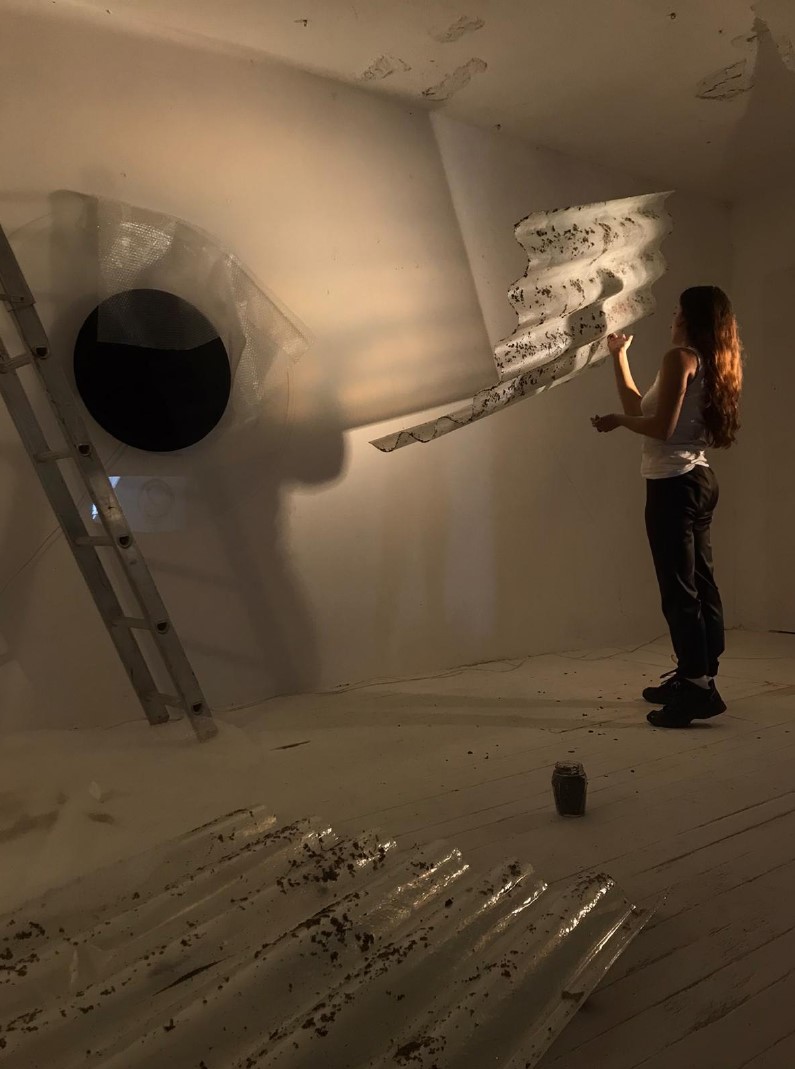
My practice is nurtured by critical art, ecology, and digital technology. Through my work, I construct narratives and tools that deepen my relationship with the environments I inhabit.
Here I have selected a series of artworks that embody this process:
Ángulos de Incidencia ( 2025 )
Ángulos de Incidencia is an installation crated in collaboration with creative studio PROXIMA.
2025: Meller, Barcelona, ES
Próxima invited me to create a living sculpture designed to refract the light into the space, and from it generate a live performance with Tomi Levita and Chango.
In alignment with my current practice of porosity, this installation was created using “residues” of previous artworks, as a form of composting. Glass, copper wires, mesh.
2025: Meller, Barcelona, ES
Próxima invited me to create a living sculpture designed to refract the light into the space, and from it generate a live performance with Tomi Levita and Chango.
In alignment with my current practice of porosity, this installation was created using “residues” of previous artworks, as a form of composting. Glass, copper wires, mesh.
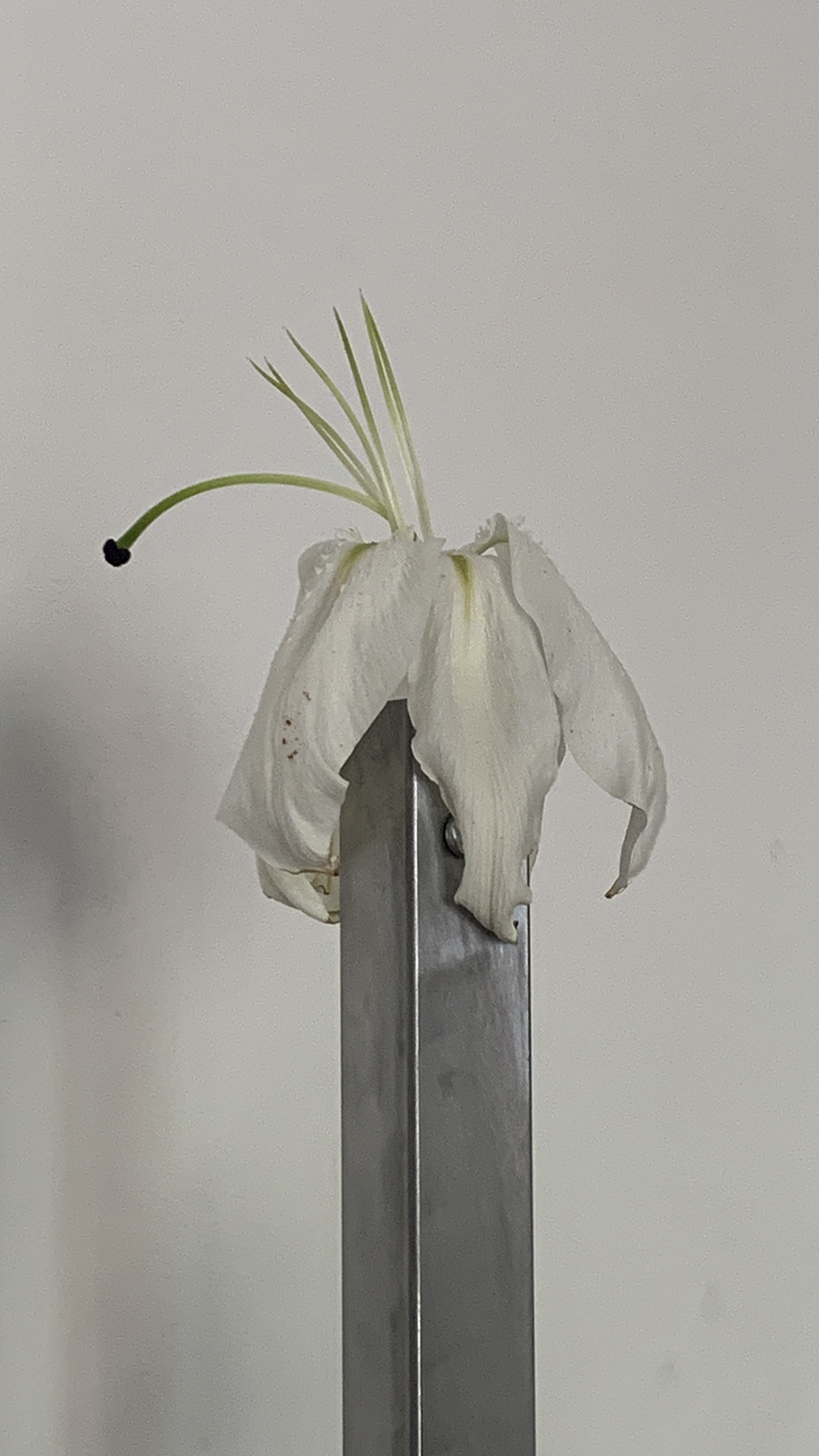
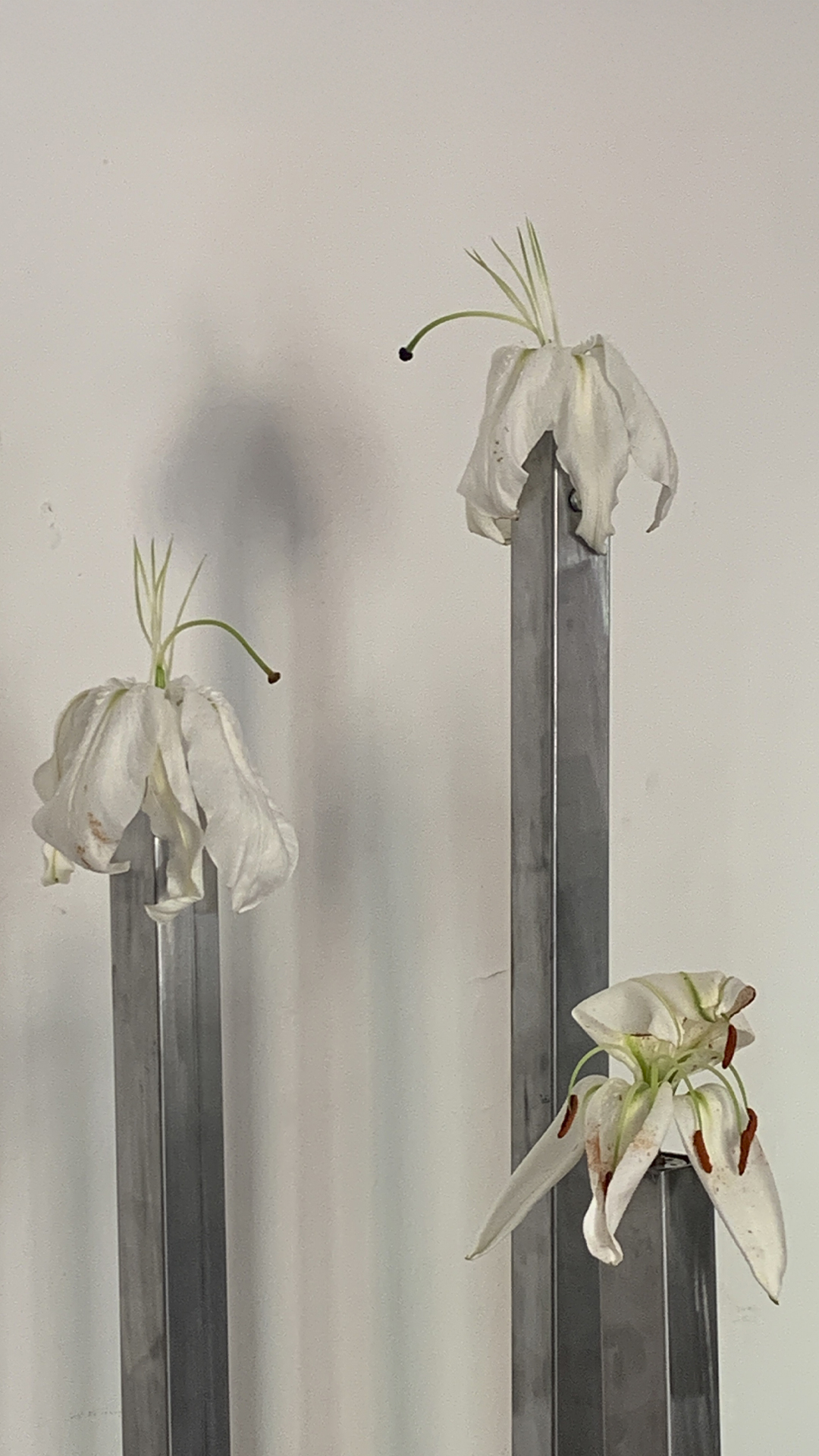
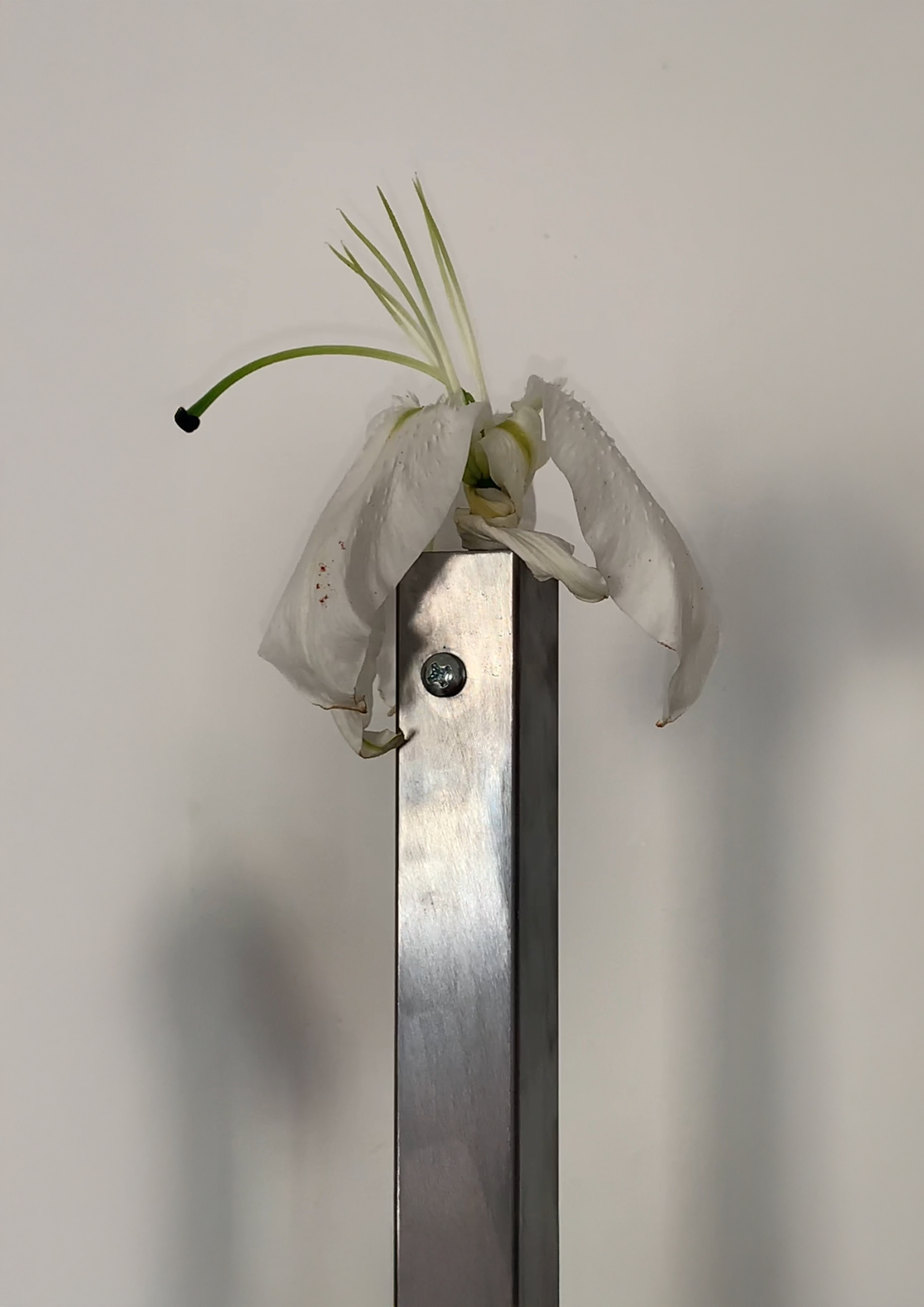
Una Práctica de Porosidad ( 2025 )
Una Práctica de Porosidad is a living research practice that explores composting as a methodology
2024: This installation emerged through an initial prototype exhibited at Rizoma Festival, La Cellera de Ter, ES.
2025: Further explored at “Spring Ceremonies” comissioned by Nike Women, Barcelona, ES.
2025: Solo Exhibition, at Il.lacions Gallery, Barcelona, ES.
2025: Turbina Festival, Mira Festival, Barcelona, ES.
This installation emerges through this process of symbolic and material decomposition, a gesture of reconfiguring language, memory, and artistic practice through porous, more-than-human dialogues.
A gesture to revisit: what is kept, what is archived, what is buried.
The intimacy of capturing the subtle nuances of my research, las sutilezas del mismo proceso o metodología.
2024: This installation emerged through an initial prototype exhibited at Rizoma Festival, La Cellera de Ter, ES.
2025: Further explored at “Spring Ceremonies” comissioned by Nike Women, Barcelona, ES.
2025: Solo Exhibition, at Il.lacions Gallery, Barcelona, ES.
2025: Turbina Festival, Mira Festival, Barcelona, ES.
This installation emerges through this process of symbolic and material decomposition, a gesture of reconfiguring language, memory, and artistic practice through porous, more-than-human dialogues.
A gesture to revisit: what is kept, what is archived, what is buried.
The intimacy of capturing the subtle nuances of my research, las sutilezas del mismo proceso o metodología.
Language, like organic matter, erodes over time, a fertile ground for new thought configurations.
In nature, waste does not existe, let the words fragment, rot, and feed what has not yet germinated.
After exploring this idea throughout the past year, I have written a draft manifest on How to Practice Porosity: Read here
In nature, waste does not existe, let the words fragment, rot, and feed what has not yet germinated.
After exploring this idea throughout the past year, I have written a draft manifest on How to Practice Porosity: Read here


A Skin of Soil [ Live A/V ] ( 2025 )
This performance is a navigation of the year of the snake to embody new skins. A series of narrative stories and speculations that play with the concept of resurrection by fire.
2025: (Not presented) Comissioned by Sonar Festival, Barcelona, ES
2025: Mira Festival, Barcelona, ES
This performance is the first of a series of a yearly collaboration and evolving research project, curated by Ikram Bouloum, in which together we explore storytelling experiences. This project emerges from an intimate need to revisit what is kept, what is archived, and what is buried. It responds to the existing, as well as our own internal climate crisis´ through the poetics of decomposition, involving more-than-human perspectives and expanded material vocabularies.
Over these past three months we have been sharing our practices, methodologies and knowledge systems, as well as personal stories and intimacies. From these biweekly dialogues, Alice Sparkly Kat has written around the theme of regeneration: a piece on migration, a silly horror story about a snake, a fable about skin, and a forecast for 2025 year of the Wood Snake. Whilst Akyute has been working on the audiovisual and audiorreactive narrative, in collaboration with sound artists Bamba and Opoku.
Together we have been assembling the performance, as well constructing an editorial format to create a piece that metabolizes past and co-imaginaries, rooted in intimacy, decay, and collective regeneration.
The performance has a duration of 45 minutes and consists of live reading accompanied by live A/V.
Together we have been assembling the performance, as well constructing an editorial format to create a piece that metabolizes past and co-imaginaries, rooted in intimacy, decay, and collective regeneration.
The performance has a duration of 45 minutes and consists of live reading accompanied by live A/V.
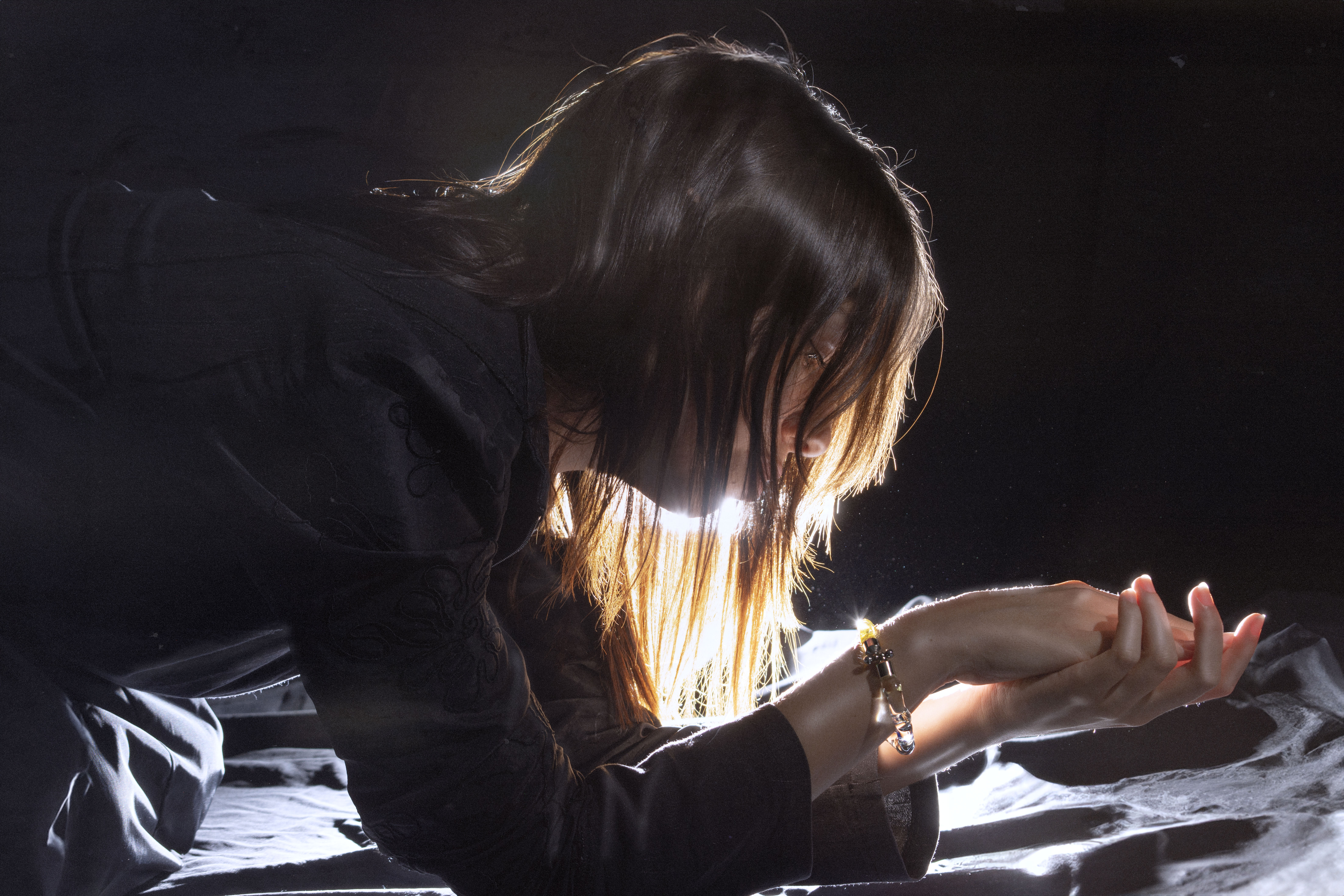
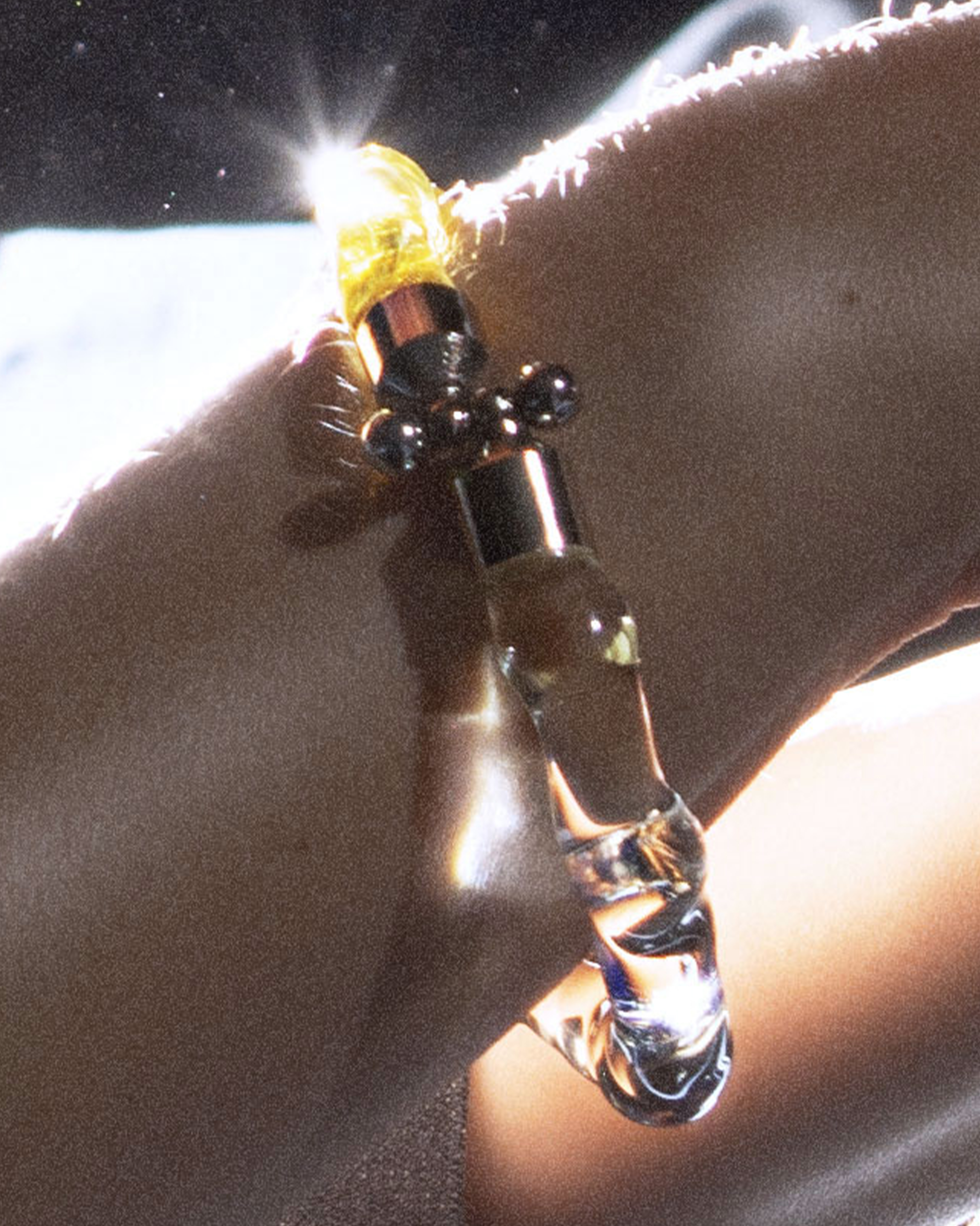
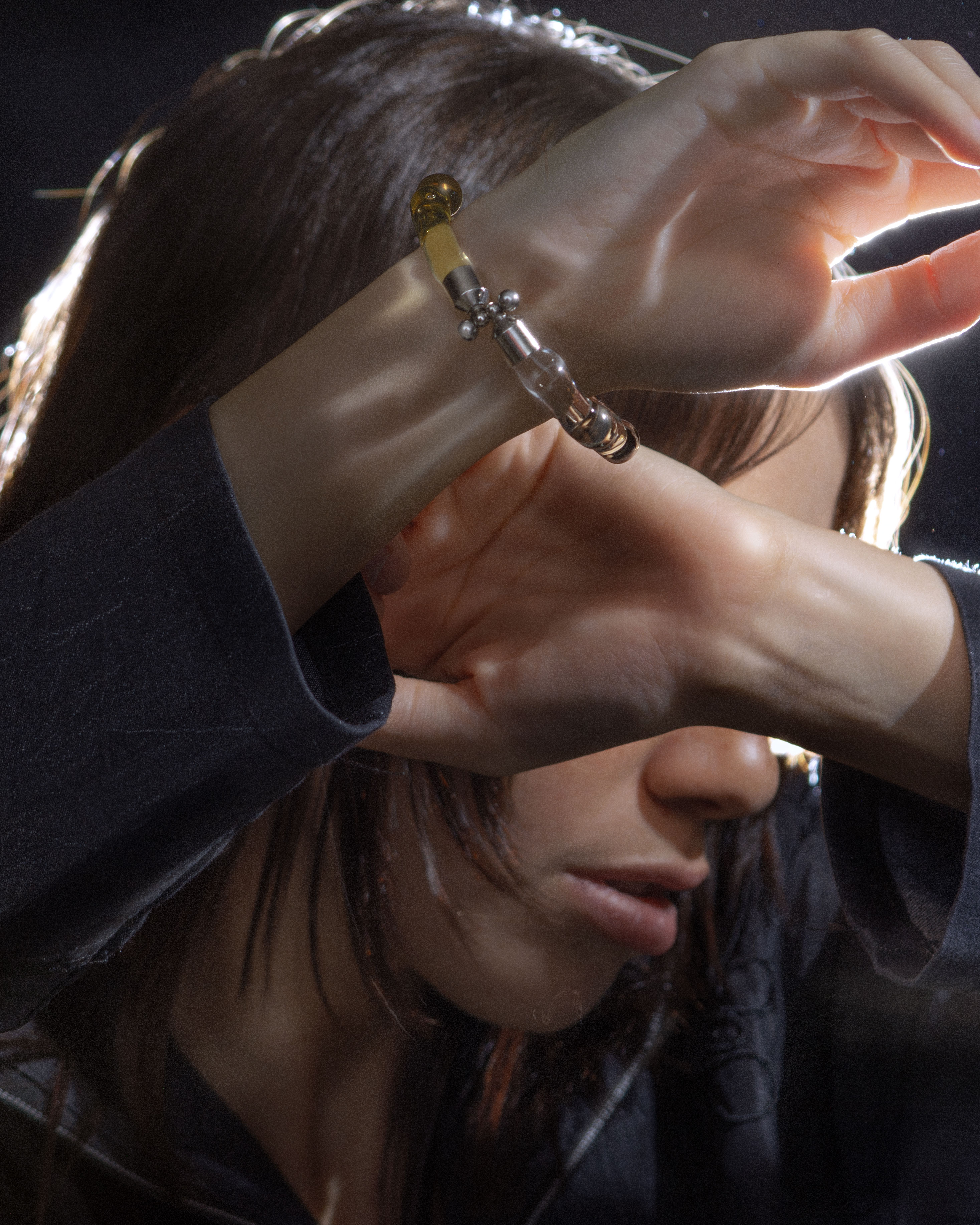
Skin Scent I-II ( 2025 )
Skin Scent I-II, is a wearable sculpture holding two perfume compartments with distinct yet layering skin scents. This piece is a collaboration with Ludmila Furman.
This collaboration was initiated as a reflection on shedding, developed in connection to this year 2025: the yin wood snake. Activated by body heat and the oil base of the structure, the scents unfold gradually as an extension of the skin. The piece was designed around release and intimacy.
Skin Scent I-II, is a wearable sculpture holding two perfume compartments with distinct yet layering skin scents. This piece is a collaboration with Ludmila Furman.
This collaboration was initiated as a reflection on shedding, developed in connection to this year 2025: the yin wood snake. Activated by body heat and the oil base of the structure, the scents unfold gradually as an extension of the skin. The piece was designed around release and intimacy.
The piece is a 1/1 edition, and was forged by hand in Barcelona using handblown borosilicate glass and stainless steel. Each compartment is a refillable bottle.